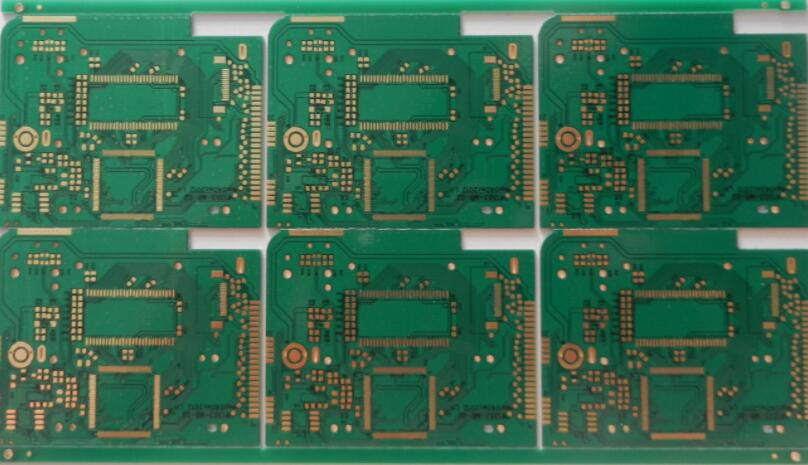PCBA incoming inspection
1. PCBA size and appearance inspection
The content of PCBA size inspection mainly includes the diameter, spacing and tolerance of the processing hole, and the small edge size of the PCBA. Appearance defect detection mainly includes solder mask and pad alignment, whether the solder mask has abnormalities such as impurities, peeling and wrinkles, whether the reference mark is qualified, whether the circuit conductor width (line width) and spacing meet the requirements, and more Whether the laminate has any remaining layers, etc. In practical applications, the PCB appearance test special equipment is often used for testing. The typical equipment is mainly composed of computer, automatic workbench image processing system and other parts. This system can detect the inner and outer layers of the multilayer board, single/dual panels, and base map films, and can detect broken lines, overlapping lines, scratches, pinholes, line widths, rough edges, and large Area defects, etc.
2. PCBA warpage and distortion detection

Unreasonable design and improper processing of the process may cause the warpage and bending of the PCBA. The test method is stipulated in standards such as IPC-TM650. The test principle is basically: Expose the tested PCBA to a representative thermal environment of the assembly process, and conduct a thermal stress test on it. The typical thermal stress test methods are rotary dipping test and solder float test. In this test method, PCBA is immersed in molten solder for a certain period of time, and then taken out for warpage and torsion detection. The method of manually measuring PCBA warpage is: Place the three corners of the PCBA close to the desktop, and then measure the distance from the fourth corner to the desktop. This method can only be used for rough estimation, and more effective methods include the ripple camera method. The corrugated image method is: place a piece of light with 100 lines per inch on the tested PCBA, and set a standard light source at an angle of incidence of 45 degrees above to pass through the light booth to the PCBA, and then use a CCD to generate the light booth image on the PCBA. The camera observes the light studio image directly above the PCBA (0 degrees). At this time, the collective interference fringes generated between the two light booths can be seen on the entire PCBA. This fringe shows the offset in the Z-axis direction. The number of fringes can be counted to calculate the offset height of the PCBA, and then pass The calculation is converted into a degree of warpage.
3. Solderability test of PCBA
The solderability test of PCBA focuses on the testing of pads and plated through holes. Standards such as IPCS-804 stipulate the solderability test method of PCBA, which includes edge dip test, rotary dip test and solder bead test. The edge dip test is used to test the solderability of surface conductors, the rotation dip test and the wave test are used to test the solderability of surface conductors and electrical through holes, and the solder bead test is only used for solderability testing of electrical through holes.
Four, PCBA solder mask integrity test
The PCBA used in SMT generally uses dry film solder mask and optical imaging solder mask. These two kinds of solder mask have high fraction and immobility. The dry film solder mask is laminated on the PCBA under the action of pressure and heat. It requires a clean PCBA surface and an effective lamination process. This kind of solder mask has poor adhesion on the surface of tin-lead alloy. Under the thermal stress impact of reflow soldering, the phenomenon of peeling and breaking from the PCBA surface often occurs. This kind of solder mask is also relatively brittle. Microcracks may occur under the influence of heat and mechanical force during leveling. In addition, physical and chemical damage may also occur under the action of cleaning agents. In order to prevent these potential defects of dry film solder mask, PCBA should be subjected to strict thermal stress test during incoming material inspection. This detection mostly uses the solder float test, the time is about 10-15, and the solder temperature is about 260-288°C. When the solder mask peeling phenomenon is not observed during the test, the PCBA test piece can be immersed in water after the test, and the capillary action of the water between the solder mask and the PCBA surface can be used to observe the solder mask peeling phenomenon. The PCB A specimen can also be immersed in the SMA cleaning solvent after the test to observe whether it has physical and chemical effects with the solvent.
Five, PCBA internal defect detection
The internal defect detection of PCBA generally adopts microsection technology, and the specific detection method is clearly stipulated in related standards such as IPC-TM-650. PCBA conducts microsection inspection after solder floating thermal stress test. The main inspection items include the thickness of copper and tin-lead alloy coatings, the alignment of the internal conductors of the multilayer board, the interlayer gaps, and copper cracks.